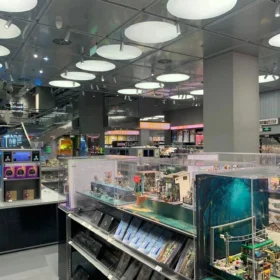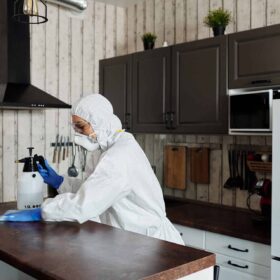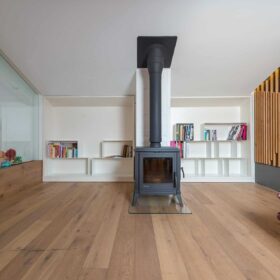How to organize and improve supermarket store Layout design
How to organize and improve Layout planning and design of supermarket store
A successful store layout design must have a reasonable plan from the very beginning, including the detailed information of the building where the store is located, the passenger flow, the product layout, etc… A well thought out plan helps the store layout encourage customers to visit and buy.
Step 1: Determine the store layout
Whether large or small, most stores are generally one of the three basic layouts shown in the figure below. I will introduce it to you in detail later.
It is worth considering that the store layout can guide product placement, guide customer flow and define the overall look and feel of the store. Many factors affect the choice of floor plan, including the size and shape of the sales floor, the type of products sold, and the target consumer group. Keep these factors in mind as we explore each floor plan option in detail below.
| Retail Floor Plan | Best For | Example Store Design |
| Grid Floor Plans Used in grocery, big box, and convenience stores | Shelf-stocked goods such as books, toys, specialty foods, hardware, and homewares |  |
| Loop Floor Plans Maximize wall space and lead shoppers along a set pathway | Apparel, accessory, toy, homeware, kitchenware, personal care, and specialty retail stores |  |
| Free-Flow/Mixed Floor Plans Used in specialty and boutique settings | Apparel, accessory, personal care, specialty brand, and mixed-use stores like bakeries that also display packaged goods |  |
| Diagonal Floor Plans Maximize employee visibility in retail stores with lots of product testing | Self-serve kiosks, tech and electronic stores, and beauty and cosmetics retailers |  |
| Forced-Path Floor Plans Customers are guided through a predetermined path and exposed to every product | Furniture, home decor, and experiential retail stores and showrooms |  |
| Angular Floor Plans Showcase curated or edited inventories in designer or specialty shops | Designers, artisans, high-end apparel and accessories retailers, and curated or limited collections |  |
Grid plan layout (linear layout)
Grid floor layout, also known as linear layout, can effectively use floor and wall space. As the display props are arranged parallel to the wall, the floor space including the corners is maximized. This layout is very convenient for customers to locate and find the goods they want, as well as for shopkeepers to classify. In addition, this layout provides sufficient display space for promotional products and seasonal products.
Because this layout is widely used in grocery stores, hypermarkets and convenience stores, many people have a sense of familiarity and familiarity with this layout. This is a good choice for small retailers with large inventories of toys, books, hardware, etc., but it is not ideal for retailers operating high-end brands, and it is really difficult to create a sense of luxury.
Circular layout
The circular layout, also known as runway layout, is the most instructive one among the three common layouts for shopping. It allows customers to clearly see each item on display, and is applicable to most small retail stores such as clothing and accessories, kitchenware and personal care.
In the circular plan, the walls of the store are visible, highlighting all the walls and displays. This layout provides a good basis for composite layout. The center of the store can be set as grid or free flow layout, or even a combination of the two.
Free flowing floor layout
The free flowing floor layout is the favorite of many professional retailers, because it can maximize creativity, and can be easily changed and updated. Free browsing is the most important feature of smooth layout. The display props are placed in a reasonable position to encourage consumers to slow down their browsing of products.
This layout creates an open view, so color and product grouping can easily guide customers to specific commodity areas; It is applicable to all types of boutiques and high-end stores. It is also applicable to stores with less inventory. Because it aims to highlight products, not the number of products.
Step 2: Draw your layout on paper
No matter whether your store layout problem has been solved, you need to write your store layout plan in written form first. Through practice, the mixed floor plan is most suitable for small retailers.
For example, your layout can start with a cycle, and then place the center part in a grid with shelves and aisles and a free flowing layout; Or, if the sales space is a non-standard shape (as shown below), you can create a circular or grid layout in one section and use a free flowing layout in another.
Take out a piece of paper, choose one or combination of the three main layout methods according to your product type, outline a feasible plan in your store space, and maximize the use of space.

Step 3: Consider customer flow and customer behavior in store layout
No matter which kind of store layout design is selected, the aisle of the store needs to be carefully planned. Before planning, you must understand three key customer behaviors:
1. Customers need transition space when entering the store, which is what experts call the decompression zone.
2. The way customers browse and shop. Most customers usually turn right when entering the store.
3. When shopping, customers need personal space and do not like crowding.
Now let’s explore how to use these behavioral tendencies to attract shoppers to your store and encourage them to buy.
Customer Behavior # 1: Decompression Zone
The decompression area is the area where your customers move from other places to your store environment (1.5m for small stores and 4.6m for large stores). Once in, they will evaluate your store and brand, and even make a subconscious judgment on the price they expect to find.
In actual operation, many customers do not think it is a waste of business space. In fact, if you are considerate of customers, they will definitely give you some rewards. All behaviors to please customers should be right!
Many retailers put new products and hot selling products in this decompression zone. They think this is the first thing customers see when they come in, so the display should be very attractive. But don’t do that. When investigating and studying consumer behavior habits, store design experts found that consumers tend to ignore display shelves, signboards, displays, etc. placed near the entrance of the store. The area outside the decompression area is your most valuable publicity space, and the decompression area is suitable to be designed as a welcome area.
Customer Behavior # 2: Turn Right, Forward
We are used to walking and driving on the right. Research on consumer behavior shows that we actually have this habit when shopping, and nearly 90% of shoppers will naturally move to the right when entering the store. Also like Britain and Thailand, they drive on the left, so they turn left when entering the store.
What does this mean for retailers:
1. The right side of the store, especially the area outside the decompression area, is most suitable for promotional display.
2. Customers will naturally walk to the right when entering, so you should plan your store traffic distribution according to the right to left model.
3. The cash register should be located on the left side of the entrance or in the middle of the store, so that the right side can display goods to the greatest extent.
Customer Behavior # 3: Personal Space
The size and location of the aisle determine the overall passenger flow of the store. The aisle must be wide enough so that customers can continue shopping without bumping into other customers. More importantly, customers can pick up and carry goods to continue shopping.
Spacious aisle is the key point of the store planning, which should be around 1.2m, so as to ensure that this aisle is suitable for all customers, including customers who are pushing baby carriages or wheelchairs, and consumers can also avoid embarrassing “docking friction” between consumers.

Step 4: Product planning, positioning the maximum exposure of the product
According to the survey, many shopkeepers soon chose to display props to fill the storefront after drawing the floor plan. However, in many cases, display props are not suitable for displaying certain products in a specific space, and many props are not flexible enough to be easily and quickly updated to display promotional or seasonal products.
Therefore, experts suggest that before considering the display of props, you should first identify the goods in your store, such as classic and seasonal goods, and plan the areas where these goods will continue to be displayed.
The following is an example of a product distribution plan that includes various product categories in a defined area:
Combining customer behavior data, experience and intuition, retailers can use these three product plans to develop successful marketing strategies:
Use regional design and marketing strategies
Territory Design can successfully help consumers find what they want, and can also increase the sales of other by-products. Generally speaking, what customers need most is usually placed on the back to increase the exposure of other products. For example, a grocery store that mainly sells milk usually puts milk at the end. When customers go in to buy milk, they will hand in eggs, cereal, paper towels, etc., so that the store can not only sell the main product milk, but also let consumers know that the store owner has other products, and encourage consumers to match and buy more. This is also the reason why supermarkets like to place lollipops and chewing gum at the cash register. It is the effect brought by the primary marketing field and the secondary marketing field.

Choose flexible display mode to emphasize “magnetic wall”
The “magnetic wall” is the area that most customers naturally pay attention to, and is also the place that customers must pass in and out. According to the customer’s behavior, the magnetic wall is usually located on the right side of the store.
Generally speaking, the magnetic wall is the best place to place popular products, new products and seasonal special offers, which can attract customers’ attention to the greatest extent and guide them into the store. Therefore, this magnetic wall requires retailers to spend more time, carefully plan and use different display props to perfectly display each group of products
It is worth noting that the magnetic wall is not limited to the storefront. Any corner in the store that can attract a large number of customers can become a magnetic wall. The magnetic wall is not limited to the display props on the wall. The atrium and the cash register can act as a magnetic wall.
Set up speed bumps and product outposts to slow down customers
In addition to the magnetic wall, it can also be properly considered to add some speed bumps and product outposts to slow down the speed and let customers more contact with products when shopping. These areas are suitable for placing hot selling products, or large inventories, or some combination products.
Step 5: Place display equipment and props in your store
After determining the store layout and product planning, it is time to consider the problem of displaying props. For example, some fixed parts: lighting fixtures, wall mounted display cabinets&racks, changing rooms, etc; There are also movable parts: groundwater level, central island
The shape, size, color and style of display equipment and props are different. The following three knowledge points are for the shopkeeper to think more when choosing props:
Display props definition brand
The basic decoration of the store (floor, wall, ceiling) and display props should be coordinated to define the entire brand. The ultimate purpose of displaying props is to put the goods in a reasonable position and show them to consumers. The overall appearance is one of the biggest selling points of this brand, so don’t be stingy in pursuit.
Use display props to display products in a planned way
The display props must be able to well support the weight and size of the exhibits and display the characteristics of the products. For example, glass displays are not suitable for electric tools, and pure metal displays are not suitable for jewelry.
Shop design experts suggest that small retailers should pay attention to the selection of multi-functional display props when selecting display props. After all, the inventory will increase in the future. If they are all fixed display props, the shopkeeper is likely to regret it in the next few years.
Space distance between display props
Please remember to leave at least one meter of passage space between the display props. It is important to know how comfortable the customer experience is. Who wants to be crowded when shopping. The spacious channel allows customers to move freely, carefully browse all the goods in the store, and give full exposure to the goods to make a good impression on customers.
Step 6: Placement of cash register
Generally, it should be placed in a position where the overall situation can be monitored, preferably in the left front of the door. This is a good place to check out, because most consumers will naturally turn right after entering the store, tend to surround the store, and finally stay on the left. With this route arrangement, consumers will not be distracted when shopping. However, for some small stores, it is also a must to put the cash register in the back, because they do not have many employees, so they can see the audience.
After choosing the cashier, enrich your collection methods! It is equipped with POS cash register, Alipay collection, WeChat collection, cash collection, etc. The collection methods are complete, which makes it convenient for customers to choose appropriate payment methods to achieve the ultimate goal of retail.
Step 7: is to create comfort zones and other amenities
The retail layout plan not only includes products, display props, cash registers, speed bumps and hot selling product exhibition areas, but also is more important to welcome customers, make them feel at home, and create an experience for them to buy back and retain you.
Retail store design experts believe that considerate amenities can enable customers to have an unforgettable shopping experience. It is recommended that small enterprises consider customer comfort when planning the floor space. Therefore, the following items are included:
chair
The retailer is suggested to provide some seats for customers or accompanying personnel to rest. Because shoppers and friends or relatives with him will feel tired when shopping, providing chairs will add a lot to the impression of consumers. Seats can be simply placed in the rest area near the cash register or locker room, so more and more supermarkets and convenience stores are paying attention to the leisure area.
Locker Room
For most clothing stores, changing rooms are essential, although they do take up some valuable space. It is recommended to set up a display area for belts, scarves, hats and other accessories near the changing area.
Cashier Checkout and customer service area
The cashier is equivalent to a customer service area in a smaller store. If the customer does not have a shopping basket, it is recommended that the store set up a larger collection cashier for the customer to store non valuables to continue shopping. After all, only when customers are empty handed can they get more products and promote more sales. In addition, the space of the cash register is large enough for customers to place handbags when checking out, which is convenient for customers. For the limited checkout space, please pay attention to keeping the checkout counter tidy and simplifying the checkout process, as well as other aspects of your business.
Step 8 Build the warehouse
The retail area of the store is critical, but the back of house space and office area also deserve attention. Properly arranging them can improve daily work efficiency. There are several things to consider when planning a useful, efficient, and secure back of house space.
Backlog and other storage
Most small stores have a small warehouse backlog, but it is best to set aside some spare space in your store layout and plan storage space. After all, you never know when you will receive a big order.
Typically, industrial shelves can handle most of the inventory backlog and inventory storage needs. Don’t forget to prepare a solid ladder to go up/down to the top shelf.
Transportation and storage
You must try to coordinate the storage of your goods in the backstage space of the store. After all, stacking inventory in the retail area is very consistent with the store image. The back warehouse is very convenient for stacking goods, disassembling goods, packing, sorting and warehousing, and can also be isolated from the retail area and customers to complement each other.
This is also very effective in today’s e-commerce era, especially if you also do e-commerce. Put some packing boxes, plastic bags and other packaging materials in the background space, you can easily and quickly handle online orders. Transportation and transportation are also very convenient.
Introduction of Showcasecabinet Display
Showcasecabinet is a retail shopfitting specialist manufacturer with over 10 years experiences, specializes in providing customers with low-cost, practical solutions in line with customers & brand identities.
We have successful shop design cases including clothing shops, bags & shoes shops, jewelry & accessories shops, optical shops, mobile phone shops, pharmacy shops, shopping mall & kiosks, etc.
Tailor-Made Custom Design
Tell us about your idea, and we will realize it into image with CAD work. Our design team is good at structural mechanics and well know how to use the right material for every fixture. In the design, we start our first step to reduce the cost with good engineering. For each fixture, we review carefully the technical drawing, the way of production, which smooth the production greatly. We are dedicated to ensure that your vision is brought to life at competitive price.
Professional Consulting
Custom Design
Free Quote
Professional Manufacturing
Global Delivery



